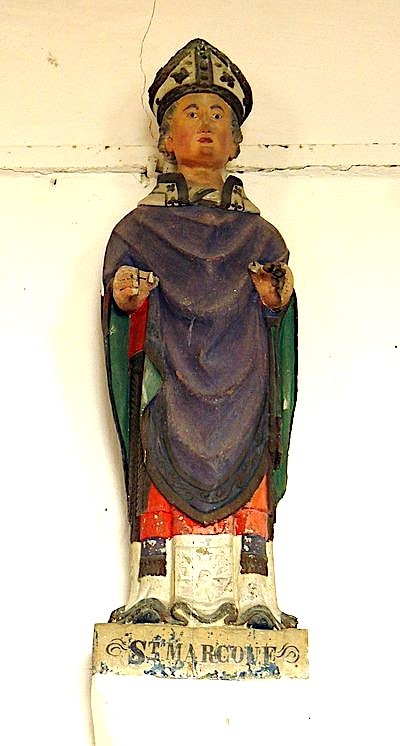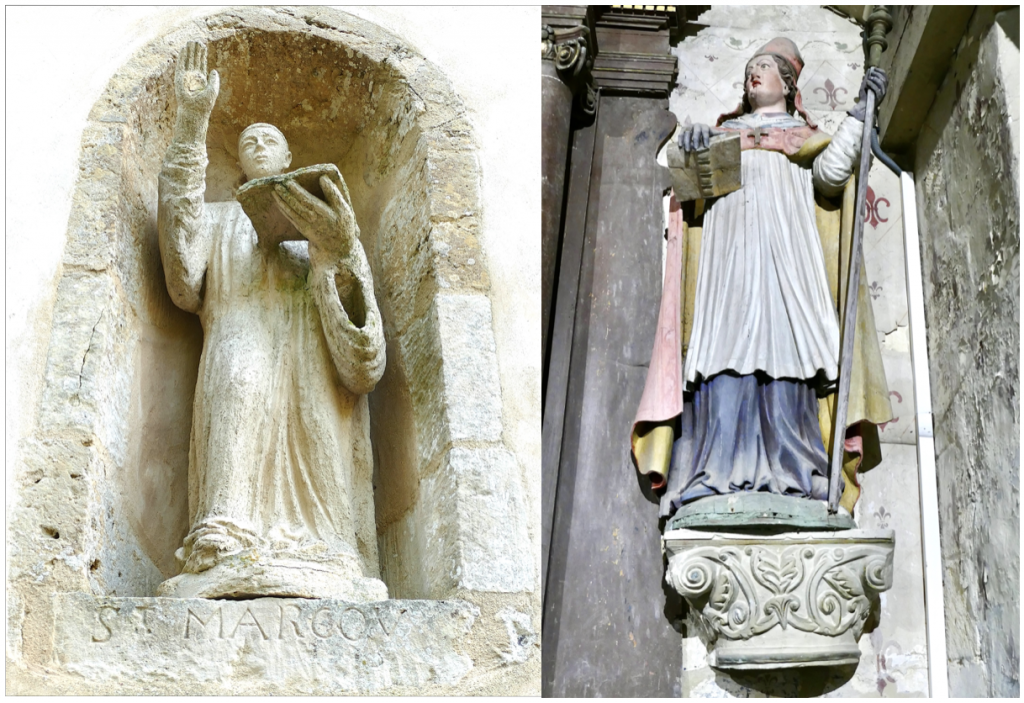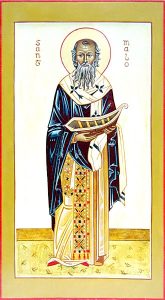The Chapel of Saint-Maclou (547-627) is dedicated to Saint- Marcouf (490-558)
Saint-Maclou was a son of a noble family, born around 547 in south Wales, in Castel-Went, today called Chepstow (twin town with Cormeilles – Calvados ).
Against the advice of his father, he joined his godfather, the great Irish saint Brendan, abbot of the Welsh monastery of Llandcarvan.
Focused on fasting and prayer, it was out of obedience that he began to preach.
Promoted to diocesan responsibilities, he did not like to administer, judge, or arbitrate; After reflection and in agreement with Saint Brendan, he left his country to join the hermit Aaron, on an island, near Alet, at the mouth of the Rance. Later, he preached to the inhabitants of Alet, prefecture of Armorique. During his lifetime, he performed several miracles in Corseul, an ancient city southwest of Saint Malo, today called Plancoët. The king of Brittany named him bishop of Alet in 590.
Donations and legacies flowed in. He becomes rich despite himself and arouses jealousy, with potential heirs feeling wronged. Those around him are persecuted, lives are in danger. Severely reproaching the inhabitants for their behavior, he pronounces a curse and leaves for Saintes with a few faithful.
Bishop Léonce welcomes him there and allows him to found a monastery.
For years, Alet, cursed by his bishop, experiences all kinds of calamities. Taken by remorse, the inhabitants repent and implore Maclou to come back and forgive them. He accepts, returns for a while among them, the misfortunes cease. However, he insisted on returning to his monastery in Saintonge where he died in 627
Marcouf (Marcou or Marculphe) is of Frankish origin.
He was born in Bayeux c.490, he distributed his goods to the poor and orphans and went to Coutance where he placed himself under the protection of Bishop Saint Possesseur.
The latter ordained him priest at the age of 30 and sent him to evangelize the Cotentin.

His preaching and his generous character provoked conversions in this land marked by superstitions.
He attracted disciples whom he brought together in Nanteuil (now Saint-Marcouf) 7 km north of Sainte-Mère Église , in the Manche.
Very quickly, people came there to ask for healing of skin diseases, especially scrofula (or scrofula), tuberculous abscesses of the lymph nodes of the neck.
He died in 558 in Nanteuil, his funeral was celebrated by Saint Lo, the new bishop of Coutance.
In 898, to avoid desecration by the Normans, his body was transported to Corbeny in Aisne, 28 km northwest of Reims, on the route de Laon.
He was the founder of the abbey of Nanteuil near Coutance.
Origin of cohabitation: why two saints in our chapel?

Cohabitation in our chapel of Saint-Maclou and Saint-Marcouf led to the precedence of the second over the first.
Saint Marcouf is in fact the current name of the church after it was for several centuries under that of Saint-Maclou.
This is a really intriguing question which we will try to answer.
The presence and antiquity of the statues would prove the coexistence of Saint Malo (alias Maclou) and Saint Marcouf, in the absence of almost non-existent archives on the subject.
If the presence of Saint-Maclou appears logical since he gave his name to the parishat the creation of the latter in medieval times, one could possibly doubt the presence of Saint Marcouf.
However, the mention Saint-Marcou(The The final “f” was not in fact pronounced in everyday language) previously engraved outside under the niche of the statue leaves no room for doubt.
The introduction of the statue of Saint-Marcouf to Saint-Maclou, subsequently leading to confusion between these two saints regarding the term of the church, could be due in reality to Henriette Le Berceur de Fontenay, born in 1733, wife of the last of Mathan (Pierre-Claude) lord of Saint-Maclou (and Sainte-Marie-aux- English).
Henriette was in fact the daughter of Pierre Claude Le Berceur de Fontenay, lord of Saint-Marcouf (and Fontenay-sur-Mer) in Manche.
The Le Berceurs were lords of this Saint-Marcouf parish since the 16th.
It is not impossible that the statue of Saint-Marcouf was offered by Henriette, in memory of her parish (and perhaps by the near similarity of pronunciation between Maclou and Marcou… because she could have given it to the church of Sainte-Marie-aux-Anglais of which the husband was also the lord).
To support this hypothesis, it would be necessary to date the St Marcou inscription (by a specialist in epigraphy) because if it is prior to the 18th century, this hypothesis that we are proposing is not the correct one (and Saint-Marcouf would have been a secondary saint in the church)…
However, we admit that our explanation is very tempting in the absence of another.
Attention to the historians who will read these few lines!


